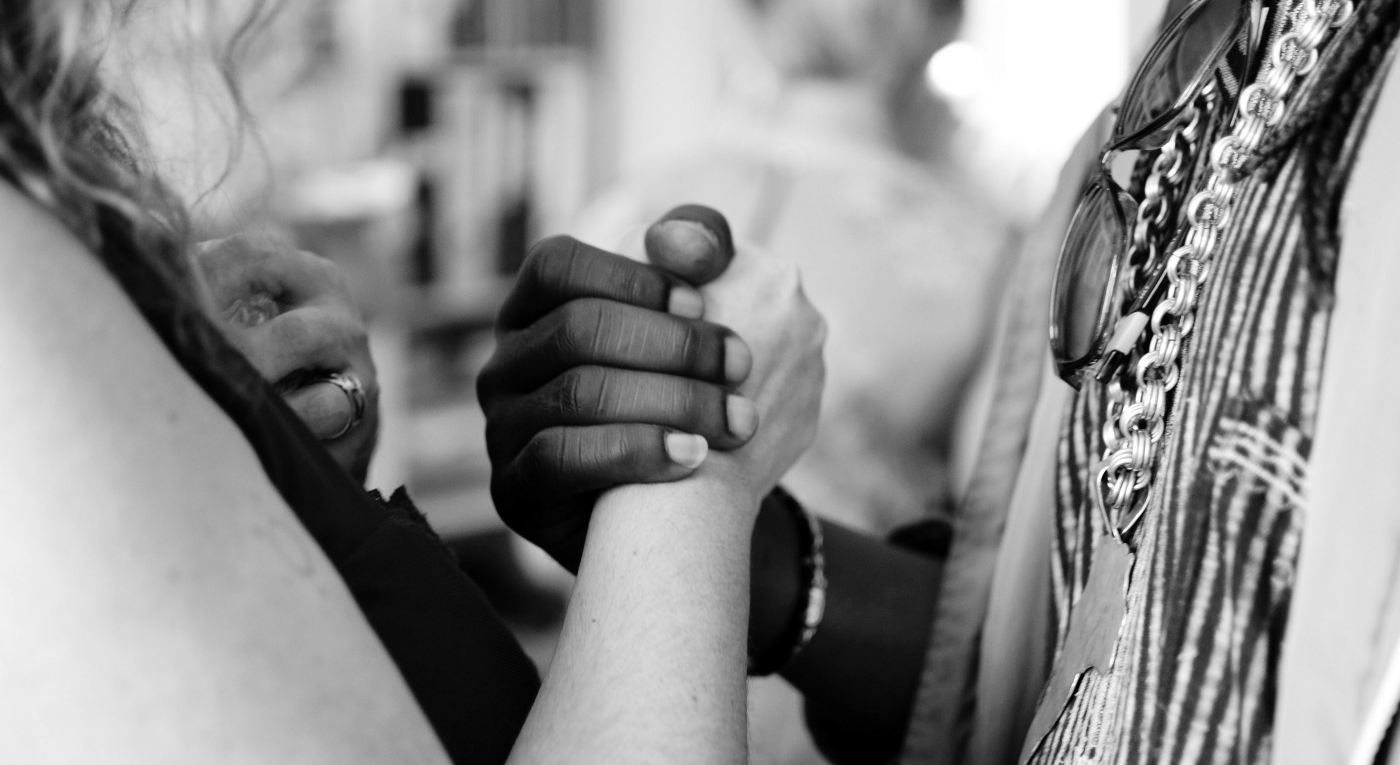Type in “empathy,” into a search engine and you get more than 117 million results. That’s a lot, no matter who is counting. But after years of being in the enterprise world of technology I am pretty sure that a lot of those results are due to folks bastardizing the Design Thinking methodology.
I could write volumes about the many distortions that corporate America is doing to the methodology that is Design Thinking. I mean entire series have been written about why Design Thinking actually doesn’t work.
And as much as I am prone to innovation; I am joining the choir of voices. This is the first article in a series of articles breaking down and breaking up with what Design Thinking has become in the world. And as I belong to the bad bitch club whose motto is “Go Big or Go Home,” I’ll start with the prized jewel of the design-thinking methodology — EMPATHY.
That Word Doesn’t Mean What You Think It Means
As a former IDEOer, I can assure you that Design Thinking, when executed by people who understand its human-centered design philosophy, actually does work, and works quite well.
But there are no silver bullets. And Design Thinking works, but what doesn’t work are short cuts. And what works even more is widening Design Thinking methodology to include non-Westernized design principles of collectivism, relationship-building and communalism. You can read more about it in my Interactions Magazine article here.
Short-changing the type of dedicated time, resources, understanding and personal transformation that it takes to execute Design Thinking at its ideal level only results in abuse.
Abuse of methodology, abuse of resources, abuse of design, and eventually, abuse of enterprise customers and eventually the people who use the products that are the outcome of this haplessly patched together system of methods people have come to call Design Thinking in the business world.
But of all the entities being abused by the distortions of Design Thinking, one of the most misunderstood, misused and abused concepts promulgated in the business world today is that of empathy.
It’s a word so small, yet so enormously misunderstood, one that most people cannot readily define if I put a gun to their head because, quite frankly, they’ve never practiced it before. Being empathetic requires a willful surrender of power and most people in the worlds of design and technology are either unable or unwilling to do that.
And so that word empathy they use so freely in conference calls and product roadmaps is in fact being misused, repeatedly and to the detriment of us all. So, sit back, strap it on and let’s jump on this whirlwind sojourn into what empathy really means in design and know that it is my hope that when it’s all over you will be inspired to change.
What the heck does Empathy mean anyway?
I can’t tell you how many times I’ve heard the words “We need to start with empathy,” in the corporate world. I hear it so much that I’m starting to hear Charlie Brown’s Teacher’s voice the minute a person starts talking about Design Thinking and empathy. Empathy, they chant, showcasing the latest TED Talk, they start talking but I’ve always tuned out.
The word empathy has been used so much and executed so little, that more than 68 million hits on the phrase “empathy is bullshit,” springs from a Google search.
As a black woman in an America, I can tell you that few people in the world can know what it’s like to “walk in my shoes.” And if you think that the result of empathy in design is all about you trying to really understand what another person is going through while leaving you unchanged; then you are an empathy offender.
It’s OK. It’s not like you’ve committed a crime. But let’s just say you haven’t been given the whole story on why empathy is a trait of human-centered design.
So instead of calling you all kinds of names as others have done, or claim that your attempts at empathy are indeed bullshit as others have repeatedly accessed, I’m going to break down what empathy in design is really about and how it plays into creating innovative products.
First, let’s level set. What is the definition of empathy —
the action of understanding, being aware of, being sensitive to, and vicariously experiencing the feelings, thoughts, and experience of another of either the past or present without having the feelings, thoughts, and experience fully communicated in an objectively explicit manner — Webster Online Dictionary

There are a couple of key phrases in here that I think are worth pointing out namely “the act of understanding,” and “vicariously experiencing,” manner. These are the traits many people hinge upon when it comes to empathy.
Walk in someone’s shoes they say.
Step outside yourself to acknowledge another they say.
Connect, listen, communicate, let them know they are not alone, they say.
Webster’s definition does lend us to think that empathy is all external, that it’s all about “experiencing the feelings, thoughts and experience,” of others. And in the world of pithy quotes, it is. But in the world of human psychology empathy actually has three levels of depth. Levels few people do the work to reach.
Each of these levels require a larger modicum of internal work that most people rarely achieve. But if you dare to want to apply empathy to your design then the first step is to start with you, your thoughts, your perspective and the journey ends ultimately in a change in your behavior.
For empathy to be a successful part of design, it must not be an external reflection, but most decidedly an internal activity that leads to transformative action. Empathy in design is not something you have, it’s something you build. And it must be designed to hit all three levels of depth or it won’t work. Let me explain.
The Three Levels of Empathy
First let’s introduce the psychological definition of empathy. Daniel Goleman, a leading psychologist who coined and defined “emotional intelligence,” explains the three levels of empathy the best, I believe.
I like to talk about these because when I’m building a workshop that is designed to build empathy among both clients and designers, I’m judging its success on whether or not people achieve all three levels of empathy from our process with them.
The first level is cognitive/intellectual empathy. This is the empathy most folks are familiar with and mistakenly refer to when talking about empathy in human-centered design.
Cognitive or intellectual empathy occurs when we know what others feel and what they think. If you think about this in terms of the design process, this happens in the story telling phase. The “what we heard,” phase of our design research shares.
In this phase, designers talk to people, write down what they said and share photos and quotes to communicate what they heard. A lot of folks stop here and expect this to build empathy.
In a further bastardization of this level of empathy, some companies abandon real people all together in favor of made-up personas that are filled with boring ass details that curiously reflect the worldview of the person who made them up. This is not empathy building. I don’t know what the hell it is, but it’s not effective in human-centered design.
When most people talk about empathy in design thinking this is what they mean. They are wrong.
In fact, research shows that it’s incredibly difficult to show empathy to people you really don’t know. And interviewing them for an hour and giving them an Amazon gift card doesn’t constitute as knowing them.

Research also shows it’s also difficult to show empathy for someone who “isn’t a part of your tribe,” who doesn’t look like you or act like you. This is why you have to engineer empathy. And why you need diverse design teams to do it.
People are evolutionarily wired to recognize and respond to differences and socially or culturally based perceptions can trigger subconscious fears that threaten emotional homeostasis. — “The Science of Empathy,” Helen Riess, Journal of Patient Experience.
You need people of different perspectives, circumstances and a variety of life experiences to cover the vast differences there are between our design teams and the people for which we make products.
Diverse design teams, in my experience, develop new and innovative ways to understand why people are doing what they do and feel what they feel; rather than just documenting what they’re doing and feeling, without change.
The second level of empathy, Goleman explains is emotional empathy. This is when you feel physically along with the other person, or feel what they feel, as though their emotions were contagious. Empaths famously have this ability. But research shows though we’re neurologically wired to have emotional empathy, that instinct can fade over time.
As a child, I remember listening to my cousin tell me the story of how she broke her leg. I felt her injury so deeply that I limped for the rest of the day. My mom thought I was nuts, but I learned later I was an empath. As a former direct marketing manager for a global nonprofit, we traded in this type of empathy daily. Our goal was to evoke an emotion.
You can achieve this level by interviewing people or designing empathy immersion experiences. At IDEO, I became somewhat adept at creating these as a first step to empathy building, most often in the form of games.
But even if you design a way for people to “feel,” what others feel, scared, alone, sad etc., it’s no guarantee they will care more about the person beyond that moment though. And not everyone is an empath, readily able to feel what others feel. Or able to make the leap to caring at all, especially if they have a life of lived experience.
That’s because there’s a danger they will inevitably compare their circumstances to others.
In this “empathy gap,” created by cognitive bias, we may see another person’s circumstance and response to it through our own mental model. And this leads to comparing that person’s response to those circumstances to our own response.
So, if you’re a designer interviewing a college student who is a spendthrift you may have a difficult time understanding his or her motivations when you yourself were a penny saver in college. This could lead to the opposite of empathy — judgement, or something worse, contempt.
So even when we cry with a person, or are moved to tears as we see others crying how much does that motivate us to change our mental model about their behavior or understand their motivation outside the framework of our own?
Research shows that our cognitive bias may even prevent us from actually empathizing with someone because it’s almost impossible to feel what they’re feeling in the moment they’re feeling it. Called the “hot-cold,” empty gap, this bias leads us to feel the opposite of what someone is experiencing.
To achieve useful empathy, we really need to decouple our emotions from another’s and fully reflect on our own motivations and behavior when it comes to the circumstances we’re trying to understand.
The last empathy level is “compassion empathy,” or empathetic concern.
Goleman explains this is the level of empathy where we not only understand a person’s predicament and feel with them, but are spontaneously moved to help, if needed.
Empathetic concern is what we should strive for when building empathy for design. Because it requires an essential element -a person’s internal motivation to change.
Pakistani author Mohsi Hamid says that empathy is about finding echoes of another person in yourself. I like this because it puts empathy in the realm of the internal work one must do to achieve it. You must first know what others feel. You then feel what they feel. But for you to act upon it you must find echoes of what they experience in your own life.
But to do this you have to overcome all the barriers to empathy we cognitively display. So, to achieve empathy, you must change the way YOU show up in a space, place and time. Empathy is about having YOUR behavior, bias and power dynamic dismantled before you can even begin to understand another’s subconscious thoughts and motivations. You don’t walk in their shoes. You take your shoes off and let their journey change you. You have to recognize their human existence first, value them as a person before you begin to express empathy. And to do that you have to let go of yourself.
We can conclude…that valuing a person in need is an important, and largely overlooked, variable and precursor of feeling empathy for that person…-Reiss says in “The Science of Empathy.”
Building empathy for people to feel; isn’t the goal. Building empathy for people to act; to change their behavior is what we as designers want.
We want designers, stakeholders and customers to change their world view to include the perspective of another so that it may forever color how they view the world. This is how empathy works in design. Anything short of this level of action is just postulating and doesn’t work.
Using empathy building as a tool to adjust the way we see the world can be effective and essential to creating impact through design. But to achieve this level of empathy requires designers, customers and clients to give up power, and value the existence of people who aren’t much like them.
Empathy Building Ain’t Easy If You Do It Right
One of my first projects as a design research lead at IDEO was for a billion-dollar entertainment company. Being on that project turned out to be the highlight of my career at IDEO. But at the time; it felt like the low point -mostly because I felt like a lost lamb as a newbie but the one thing, I’ll always remember is the days we spent building empathy with our clients.
It was imperative to any design outcomes that we get our highly successfully and sales-focused executive team to adjust how they thought about how they treated their customers. Customer service was subservient to sales. If the sale was made then, it seems, it mattered little how the customer felt.
In fact, they had a motto that their entertainment “experience makes up for all our other sins.” Well, ooookay. But I also felt the need to engineer the same transformation in my design team. There was a bias shown toward the people who worked at this company.
Most of them didn’t have college degrees, worked for hourly wages and didn’t have the privilege of being a white-collar worker. The total opposite of our design team.
For us to unearth real problems, true motivations and desires and for our stakeholders to adopt any design we came up with I knew we had to get our whole team — designers and clients — to try to think about making the buying experience as heavenly as the entertainment payoff, for both worker and customer.
I knew we had to make our clients feel what their customers feel, but beyond that we had to make them and us show up differently. To give up our power so that we could see the world differently. I needed both the design team and the decision makers to develop empathy concern so that we all could change our behavior.
So how do you build empathy? Well, you design it, just like everything else.
Starting with a Blank (Uncovering Bias) Slate
In design, people tend to view empathy as a bulleted item in the research phase. Recruit people. Interview them. Take some pictures. Get pain points. Translate pain points into insights. Boom! Empathy. Um, not really.
Empathy needs to be built, overtime and nurtured and it begins long before a design team talks to a product user. It starts with internal reflection within the design team to uncover our biases, our experiences and our mental models surrounding the problem space we’re tackling.
For empathy to be built in design, we have to purposefully decouple our experiences, and our mental models associated with those experiences, from the product user. We can’t walk in their shoes and that means we must take ours off, to transform into more of a blank slate. Or as much of a blank slate as possible.
Don’t believe me just ask Dr. Helen Reiss, who has been studying and teaching empathy in the health care field for decades. Reiss specializes in empathy research and the neuroscience of emotions.
Reiss, a Harvard Medical School Professor and Founder of Empathetics, created an empathy-building program for leaders, mainly physicians. This program builds empathy, it’s designed to cultivate empathy within physicians so they can give better treatment.
One of the main tenants in this program is to help people “to focus using deep breathing and by cultivating a detachment.” It sounds so counterintuitive to the “walk in their shoes,” mentality. But in reality; true empathy has no shoes on. It’s less about you walking in another person’s shoes. And more about you taking your shoes off.
“Suspending your involvement in an interaction to better understand what’s happening provides a mindful awareness of the interaction, instead of being lost in your own thoughts and feelings.” — Helen Reiss
When I was a journalist, I used to do a form of deep-breath focus mediation before every interview. I did it unwittingly but found it was such a better start to my research and storytelling if I rid myself of all that was me and became “an empty vessel,” to absorb what I was about to hear.
If in your design you’re not creating a series of empathy building exercises beginning with unburdening your team of their own biases toward the class of product users, you’re designing for; then you’re not doing it right.
Empathy in HCD Case Study
For the entertainment company, we designed a daylong empathy immersion where they experienced what it was like to be their customer, to be ignored, to be pressured to buy, to be misunderstood, or not listened to at all. It was probably the most frustrating day they’d ever endured. (I think someone actually said that.)
We did this for the design team as well. We did exercises to uncover bias; to get at how each designer felt and what experiences he or she had with the people we were designing for.
But that wasn’t the payoff. We also took our stakeholders on research trips to observe and hear for themselves what their customers had to say about their company’s service and that hurt — a lot. We trained them on developing the “blank slate,” and emptying their minds and thoughts to their past experiences so that they may be open to what they would hear.
We also gave them time to reflect on these experiences and to talk about their own lives and the instances where they had echoes of experiences their customers had happen to them.
In all, we had more than four empathy building events and exercises. That’s not including the research share of stories, pictures and quotes we got from product users we talked to. Our storytelling was always grounded in empathy, but our design principles and the design prototypes we built were grounded in that as well. There was a through line from the insights and revelations we all experienced directly to what was designed.
The series of empathy experiences we designed did change the point of view of our clients. They had revelations that one executive said, “will forever change how I view and treat our customers.” This is an effective use of empathy in design. Anything less is just pretending.
The truth is for empathy to be effective in design, we as designers have to engineer it on a daily basis. That means being in constant mode of self-reflection about who we are and how we show up in the spaces and places we invade as designers.
Empathy doesn’t start and end in the research phase, it’s built over time, and to truly have empathy you must spend extended periods of time with the people you’re designing with.
Yes, I know about scale. This is partly why large companies depend so much on personas.
You can’t spend time with the 10 million users of a product. I get that.
But you also can’t build for 10 million people if you don’t ever talk to anyone. I mean only in corporate America would we remove people from the process of understanding people. Like, who does that?
Which is why it’s so important to involve design research with people over the entirety of the product development phase, from idea and innovation, to build, prototyping, MVP, product launch and beyond. And it’s important that research includes people at all levels from the C-suite to the computer console to the other end of the phone. There are many players in a design system and it’s important you empathize with them all.
When I was a design research lead at IDEO; I always got push back from corporate clients who questioned our mostly qualitative, ethnographic research methods. That’s fine, I get that. But I did correct them when they said we only talked to 5 or 6 people. In fact, on each project we ended up talking to 100s, really talking to them, sitting down with them, going through exercises, being in their homes, listening to them work, observing them in their kitchens. We spent a lot of hours in silence, in the presence of people and really, that’s what it takes for empathy building.
If every designer thinks of empathy as an internal effort that is built over time, and constantly engineered, we may be closer to effectively including it in our design thinking process.
So, empathy isn’t just about talking to people, hearing their pain points and gathering insights but it’s doing all that and having that change how we view the world, so drastically that we actually change it. This is the power of empathy in design. Anything less…. well, go big or go home.








